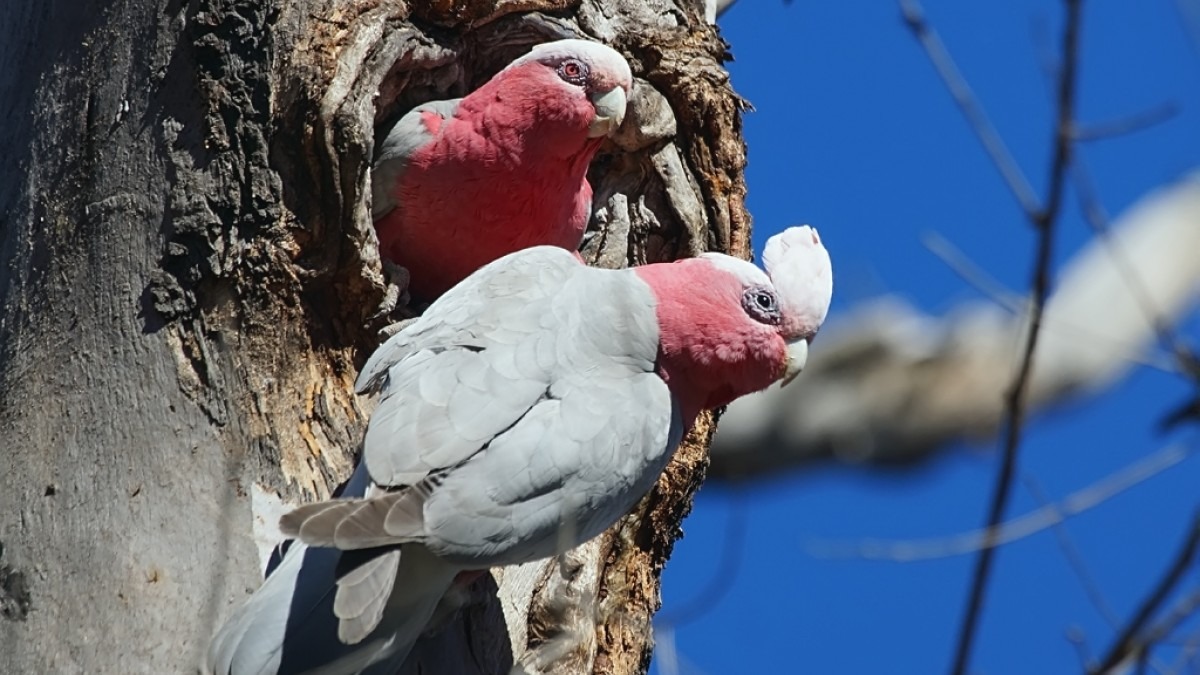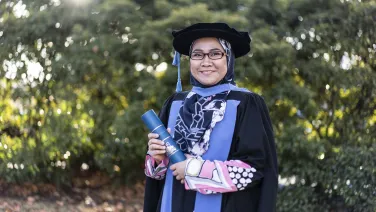
Get up close and personal with a local tree this lockdown
Unexpected things can happen to a person when you're stuck at home.
When your whole view of the world is only what you can see through your window, or on your neighbourhood walk, things can start to look... different.
For example, you might find yourself with — how can I say this? — fond feelings for a local tree. Maybe that tree now seems more significant to you than it did before.
This is good news for Cara Parsons.
As part of her PhD at the ANU Fenner School of Environment and Society, Cara is asking citizen scientists to get up close and personal with their local mature eucalypts.
Focusing on a particular tree, Cara wants volunteers to report to her on the size and number of branches it drops over a period of one year. Then she’ll use the data to calculate the potential risk of dangerous tree limbs falling on people or nearby infrastructure.
Cara already has a number of enthusiastic citizen scientists reporting for duty across the east coast of Australia, with some providing fortnightly tree updates.
“There are some people who are very attached to a particular tree and the animals using it,” she says. “They've always got a story associated with it. It’s so nice to see.”
Cara says she’s made the data collection “nice and easy”, asking for the lengths and circumferences of fallen branches, both living and dead, along with observations about how far they fell.
The data will inform Cara’s research into the removal of mature trees in new residential developments in Canberra, Sydney and Brisbane. Currently, only about 20 percent of mature trees are retained by developers, but with better planning, Cara believes that number could be increased to 80 percent.
“I think the risk these trees pose isn’t nearly as high as people interpret it to be,” she says. “These trees aren’t that scary. If we can conserve them in a safe way, such as in reserves, we should be able to keep a lot more of them.”
While many people see falling tree branches as a nuisance, Cara says, the habitat value of these mature trees is enormous.

“You might look up and see a tree that looks old and like it has dead branches, so it might not look perfect and healthy, but it’s got so much value in that state.
“Eucalypts take at least 150 years to develop the hollows which are used by nearly 200 vertebrate species, many of them endangered. That’s so important.
“Also, as the tree gets older, the branches get more horizontal, and birds like to rest on those more. And an older tree also produces more nectar for birds and other animals to eat.
“All of this makes a mature tree worth so much more than ten new seedlings.”
Cara was drawn to her PhD research after many years as a wildlife carer, raising injured and orphaned brushtail possums and flying foxes in Brisbane. She’s seen first-hand the consequences of habitat loss and other human impacts on native animals and hopes her findings will make a difference at a policy-level.
Cara was drawn to her PhD research after many years as a wildlife carer, raising injured and orphaned brushtail possums and flying foxes in Brisbane. She’s seen first-hand the consequences of habitat loss and other human impacts on native animals and hopes her findings will make a difference at a policy-level.
“On a country-wide or planet-wide scale, caring about wildlife can get really exhausting and depressing,” she says. “So it’s nice when one person feels like they can make a difference, even if it’s just about one tree. It’s still something.”
If you have fond feelings towards a local tree, find out how you can contribute to Cara’s citizen science project here.
Header image credit: @puzzlement on Flickr CC by 2.0




